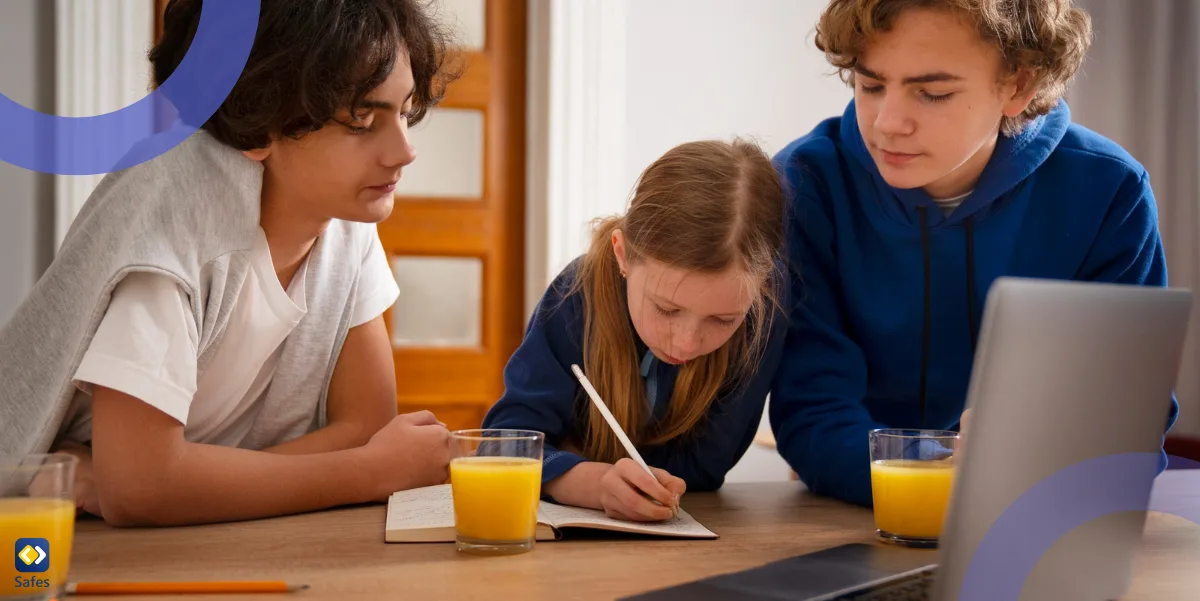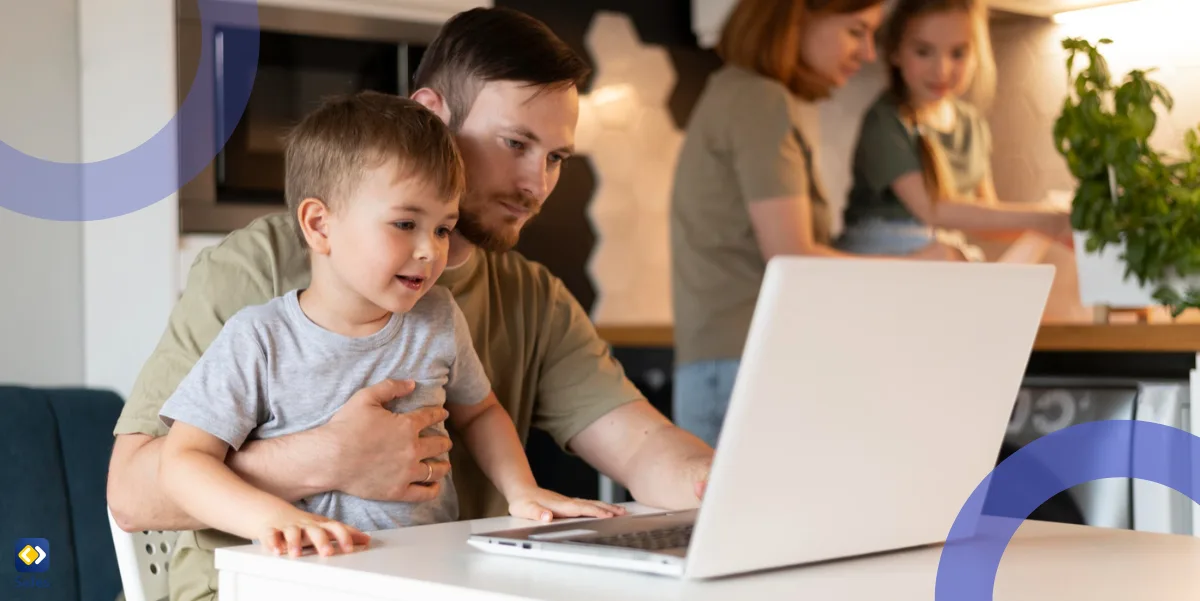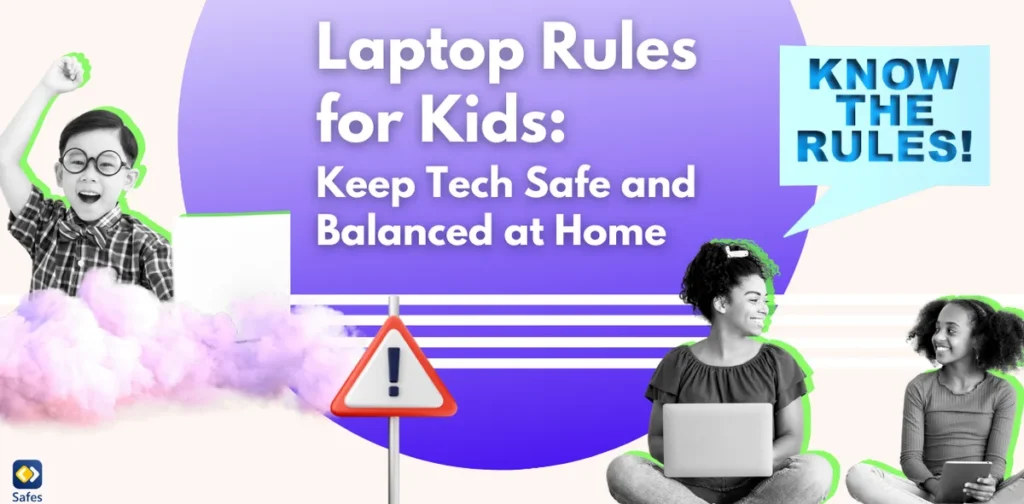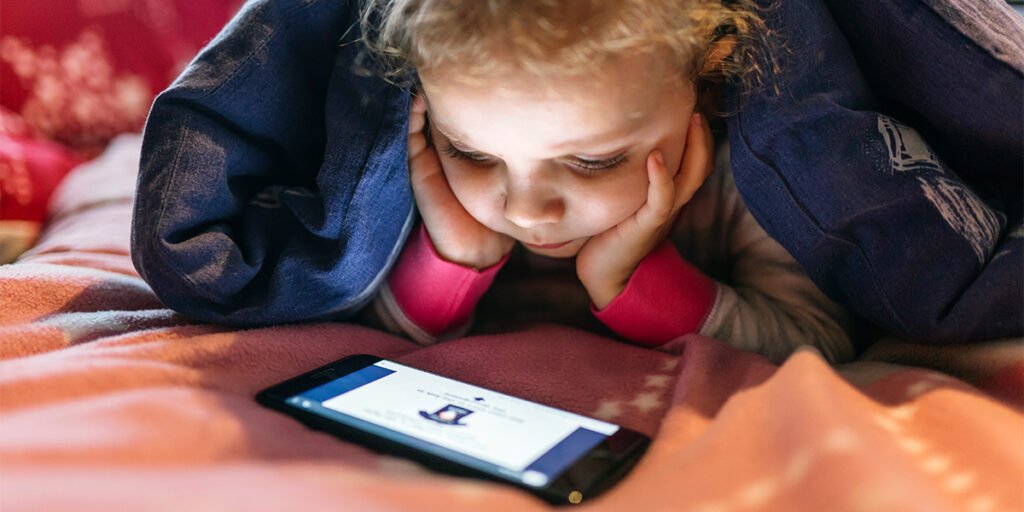In an era where technology is inseparable from daily life, laptops have become an integral part of our children’s lives, offering them a gateway to education, creativity, and entertainment. However, without proper boundaries, the same device that helps with homework and learning can lead to distractions, overuse, and even exposure to harmful content. This is why setting up laptop rules for kids is essential.
Download and Start Your Free Trial of the Safes Parental Control App
By establishing clear guidelines, you can strike a balance between the benefits of technology and its potential risks. From managing screen time to ensuring online safety, this blog will walk you through practical strategies for creating a safe and productive laptop environment for your child.
The Importance of Clear Laptop Rules
As the world becomes more digitally connected, your child’s safety online becomes more important. Clear laptop rules act as a protective barrier, guiding them away from inappropriate websites, phishing scams, and online predators. For instance, setting up a laptop with parental controls helps block harmful content and limits access to age-appropriate apps.
Additionally, monitoring features like activity logs can give you insights into their online behavior, ensuring they stay within safe digital boundaries. Rules like these not only protect them but also teach them to navigate the internet responsibly.
Promoting Responsibility and Healthy Habits
Laptops are powerful tools, but they’re also a big responsibility. By setting rules, you encourage your child to use their device thoughtfully, whether it’s completing homework, exploring hobbies, or chatting with friends. Rules also help avoid conflicts over screen time and promote healthier habits like taking breaks, sitting with good posture, and balancing online activities with offline play.
Essential Rules for Laptop Use
Laptops are versatile devices that can benefit kids immensely when used responsibly. This section explores key rules to ensure their use remains both safe and productive.
Setting Time Limits
Time management is a critical skill for children to learn, and laptops provide an excellent opportunity to instill this value. Set daily or weekly screen time allowances based on your child’s age and needs. Tools like Microsoft accounts allow you to track and limit their screen time step by step, ensuring they don’t spend excessive hours on the laptop.
For example, during school days, designate specific hours for homework and relaxation, while weekends can allow more flexibility for entertainment. Windows laptops have built-in parental controls that make enforcing these limits easier.
Defining Usage Purpose
Not all laptop time is created equal. Specify when and how the laptop should be used—whether it’s for homework, creative projects, or watching educational content. Using a start menu to create separate profiles for study and leisure can help your child stay focused on the task at hand. Encourage them to use tools like Windows search to quickly find what they need without distractions.
Ensuring Appropriate Content
Installing parental controls and reviewing content regularly are vital. Block websites or apps that may expose your child to inappropriate material. Downloading and installing content filters or safe browsers is a good idea to provide a layer of protection. Also, encourage discussions about what’s appropriate online to help them make better choices independently.
Teaching Respect for Shared Devices
If the laptop is a shared family resource, establish rules about taking turns and handling the device with care. Discuss the importance of saving files in the right location and logging out after use, especially when accessing a shared email address or account.
Using Laptops in Shared Spaces
To ensure better supervision, encourage your child to use their laptop in a common area like the living room or kitchen. This helps you monitor their activities and promotes a sense of accountability.

Teaching Online Safety
Teaching your child to navigate the online world safely is as important as teaching them how to cross the road. Here’s how you can start:
Recognizing Phishing and Scams
One of the most critical skills for children in today’s online world is identifying scams. Teach them to recognize phishing attempts, like suspicious emails asking for personal information. Encourage them to verify links before clicking and to ask you if something seems off.
Protecting Personal Information
Make sure your child understands the importance of not sharing personal details, such as their address, phone number, or school name, online. Setting up a laptop with parental controls can also prevent accidental data sharing.
Emphasizing Strong Passwords
Help your child create strong, unique passwords for their accounts. Tools like password managers can make this easier. Explain how a strong password—one with a mix of letters, numbers, and symbols—can protect their information from hackers.
Encouraging Healthy Habits
Laptops can be beneficial for kids, but maintaining healthy habits is key to ensuring their overall well-being while using technology.
Taking Regular Breaks
Staring at a screen for hours can cause eye strain and fatigue. Encourage your child to follow the 20-20-20 rule: every 20 minutes, look at something 20 feet away for 20 seconds. Use laptop alarms or a parental control app to schedule reminders.
Maintaining Proper Posture
It’s important to ensure that laptops are positioned at eye level to avoid unnecessary neck strain and discomfort. Investing in an adjustable laptop stand and a comfortable chair is a simple yet effective solution for promoting good posture. Additionally, teaching your child to sit upright with their feet flat on the ground can help maintain proper alignment and ensure an ergonomic sitting position. Encourage regular breaks to stretch and move around, as this reduces the risk of physical strain from prolonged sitting. These habits foster long-term well-being and help your child build healthy technology practices.
Balancing Online and Offline Activities
While laptops provide a wide range of opportunities for learning and entertainment, it’s essential to maintain a healthy balance between screen time and offline activities. Encourage your child to explore hobbies such as reading, playing sports, or engaging in creative arts like drawing or music. These activities not only contribute to physical and mental well-being but also foster important life skills like problem-solving, creativity, and social interaction. A well-rounded lifestyle supports cognitive development and helps prevent overreliance on digital devices.
Enforcing Rules Effectively
Setting clear expectations for laptop use can prevent misunderstandings and encourage responsibility. Here’s how you can enforce rules effectively.
Creating a Laptop Use Agreement
Consider drafting a written agreement outlining the rules for laptop use. Include consequences for breaking the rules, such as losing screen privileges for a day. Have your child sign the agreement to make it official.
Using Parental Control Apps
Apps like Safes make it easier to monitor and manage your child’s laptop use. These tools allow you to set screen time limits, block inappropriate content, and track online activity—giving you peace of mind while teaching your child responsibility. Keep reading to claim your free trial!
Leading by Example
Children often imitate the behaviors of those around them, especially their parents. Therefore, it’s essential to model good tech habits in your daily life. By consciously avoiding device use during meals or family time, you set a strong example for your children to follow. This not only reinforces the importance of these rules but also encourages mindful and respectful technology use. Demonstrating balance between screen time and other activities helps instill healthy habits in children and fosters a sense of responsibility toward technology usage.

Adapting Rules as Your Child Grows
As your child grows older, their needs and responsibilities will naturally evolve, making it important to adjust your approach to laptop use rules accordingly.
Adjusting Privileges Over Time
As your child matures, gradually loosen restrictions and give them more autonomy. For instance, allow older children to choose their own apps or manage their own passwords with supervision.
Encouraging Open Communication
Create an environment where your child feels comfortable discussing their laptop use. If they encounter something troubling online, they should know they can come to you without fear of punishment.
Teaching Self-Regulation
As children grow, it’s important to guide them in setting their own limits and making responsible decisions. Encouraging this behavior not only helps them navigate daily challenges but also prepares them for independent laptop use in the future. Research has shown that self-regulation is a crucial skill that fosters decision-making and responsibility, empowering children to manage their own time and behaviors effectively. By nurturing these skills early on, parents can help their kids develop the autonomy needed for using devices responsibly in a digital world.
How Safes Can Help with Laptop Rules for Kids
Safes parental control app is your ally in managing your child’s laptop use effectively. From setting up parental controls to monitoring their screen time, Safes offers a comprehensive solution. Its user-friendly interface works seamlessly across platforms, including both iOS and Android mobile devices. With Safes, you can block harmful websites, track activity, and even schedule screen-free hours.
Safes ensures your child stays safe online while giving you the tools to enforce rules effortlessly. It’s time to start taking your child’s digital habits in your own hands. Sign up for a free trial today and experience the difference.
Conclusion
Establishing laptop rules for kids is a proactive step toward fostering a safe and balanced digital environment. From setting time limits to teaching online safety and encouraging healthy habits, these rules help protect your child and promote responsibility. Remember, every family is different, so customize these guidelines to fit your unique needs.
Your Child’s Online Safety Starts Here
Every parent today needs a solution to manage screen time and keep their child safe online.
Without the right tools, digital risks and excessive screen time can impact children's well-being. Safes helps parents set healthy boundaries, monitor activity, and protect kids from online dangers—all with an easy-to-use app.
Take control of your child’s digital world. Learn more about Safes or download the app to start your free trial today!




